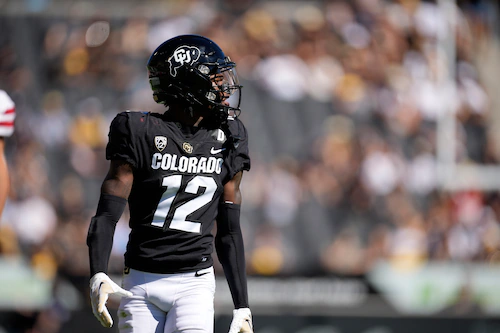CLEVELAND, Ohio — If fortune favors the bold, then Andrew Berry is about to change his luck. The Browns’ top executive is still reeling from the Aaron Judge-sized “swing and miss” that was the Deshaun Watson trade. But he can still save this baseball analogy by drafting football’s Shohei Ohtani on Thursday night.
That is, assuming Colorado superstar Travis Hunter can bat clean up.
Most modern-day Mel Kipers are mocking the two-way stud to Cleveland ahead of the NFL Draft. And in Berry’s book, that means bucking history. See, the Browns view Hunter as more receiver than cornerback. The prospect’s ball skills, in Berry’s opinion, are his rarest talent.
But from Cleveland’s first-round position, draft history counts few perimeter pass catchers.
Only 18 wide receivers have been drafted third or higher in league history, per Pro Football Reference’s database. And 18 years (!) have passed since the most recent receiving prospect — former Lions receiver Calvin Johnson, drafted in 2007 — was picked so high. Amid the passing revolution and offense-friendly rule changes, general managers still balk at choosing receivers near the draft’s tippy top.
Here’s the catch, though: When general managers are willing to gamble, receivers often reward their risk. Of those 18 top five picks, 12 made at least one Pro Bowl (average pick made 4.2 Pro Bowls). Eight became All-Pros. Four have a Hall of Fame bust, and former Cardinals receiver Larry Fitzgerald, drafted third overall in 2004, becomes eligible for Canton next year. He won’t wait long.
No two drafts (or draft prospects) are alike. But if I told you Hunter had a four in six chance (66.7%) to make a Pro Bowl, a four in nine chance (66.7%) to earn All-Pro honors and a 27.8% Hall of Fame probability (five out of 18), wouldn’t you plead for Berry to pick him?
Now consider Hunter’s college production, which also portends a promising trend. Among Power 5 conference teams, only 14 other college receivers have ever finished a season with at least 90 catches for at least 1,200 receiving yards and at least 15 receiving touchdowns, as Hunter did last season.
Ten became first-round picks. Seven cracked the top 10. Four of them made 21 combined Pro Bowls. And of those 21 Pro Bowls, 16 came from the three players — Fitzgerald, Braylon Edwards and Amari Cooper — selected fifth or higher.
Again, not all outlier prospects become outlier players. Edwards (2005) and Fitzgerald (2004) filled the same draft slot. The career similarities end there. But if — Aaron Judge-sized if — the Browns have ID’d an elite receiver, history says they should pick him. The next Browns quarterback agrees (whoever he is). Hitting on a player like Fitzgerald, Cooper or Johnson can change a franchise’s fortunes.
By the way: None of those guys could cover anyone. Hunter still wants to help his next team on defense. How much would the Browns let him play both? Who knows. But they at least seem open to the idea (or something like it).
Berry said last week that Hunter’s conditioning amazes him, and Cleveland wouldn’t “put a cap” on the prospect’s capabilities. That being said, “we would want to be smart in terms of how we started him out,” Berry said. “I think I’ve mentioned before, we would see his first home as receiver and his second home on the defensive side of the ball.”
Fine with me. Let Hunter hit (baseball) before he hits (football). Even if the Browns “limit” their two-way star to one side of the field, he’s worth the pick.
Because receivers like Hunter are rarely available. Berry needs a good at-bat. And for the baseball fans among us, it’s worth remembering:
Ohtani won MVP last season without throwing a pitch.

